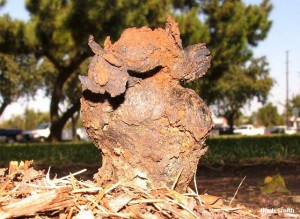This may be of interest: Fungal Communities Including Plant Pathogens in Near Surface Air Are Similar across Northwestern Europe Nicolaisen M, West JS, Sapkota R, Canning GGM, Schoen C and Justesen AF (2017) Fungal Communities Including Plant Pathogens in Near Surface Air Are Similar across Northwestern Europe. Front. Microbiol. 8:1729. doi: 10.3389/fmicb.2017.01729 Information on the …
Not for the faint of heart. But this is an important article and worth a look: Hunting a Killer: Sex, Drugs and the Return of Syphilis – The New York Times In the article, Jan Hoffman discussed the “return of symphilis” – that is, how syphilis has been undergoing an increase in the number of outbreaks …
There is a new open access paper of possible interest to those working on water systems, green buildings, and/or microbial ecology: Survey of green building water systems reveals elevated water age and water quality concerns – Environmental Science: Water Research & Technology (RSC Publishing) DOI:10.1039/C5EW00221D By William J. Rhoads, Amy Pruden and Marc A. Edwards in Environmental …
A few weeks ago, I came across this article that someone had posted to social media with the title “Your make-up could KILL you: Deadly meningitis bacteria discovered in products”. It turns out there are a lot of articles on the internet discussing the horrors of expired makeup, the most recent ones linking back to a …
Well, this story is a wee bit disturbing: Deadly bacteria release sparks concern at Louisiana lab. Summary from USA Today: Officials are investigating how a deadly type of bacteria was released from a high-security laboratory at the Tulane National Primate Center in Louisiana. Officials say there is no risk to the public. Many parts of the …
Today, humans spend ~90% of their lives roaming the ‘great indoors’, which is very different from the outdoor environments where we co-evolved with our commensal microbiota (Kelley and Gilbert, 2013). We are just beginning to understand how the design of built environments (BEs) influences our microbiome, and how these interactions, in turn, might affect human …
Harper Adams University in the UK recently posted a news article describing some intriguing work being done by Senior Lecturer Frank Vriesekoop, who has been investigating, among a slew of other interesting topics, whether banknotes can transfer bacteria, including pathogens. The original paper (unfortunately, not Open Access) in which his work was reported can be found here. …
Recently, a bit of an uproar occurred when the CDC reported that workers there had been accidentally exposed to the bacterium that causes anthrax. The lesson from this? Well, I think it is simple. Accidents happen. And they can happen anywhere to anyone. No matter how careful one is. A few days ago a friend …
UPDATED AT BOTTOM – TURNS OUT NEWS STORY WAS VERY MISLEADING Wow. Just got pointed to this news story: BBC News – Closing hospital windows ‘increases infection risk’. It reports on work from Cath Noakes from the University of Leeds. The work is published in a non open-access journal “Building and Environment” which I do not …
Going through the list of Microbiology Blogs we have curated at microBEnet and going to try to feature one of them every day or so. And just going to do this in semi-alphabetic order. Today’s blog: Coastal Pathogens Author: William Gaze and Michiel Vos at the Coastal Pathogen Group at the European Centre for Environment and Human Health in …



